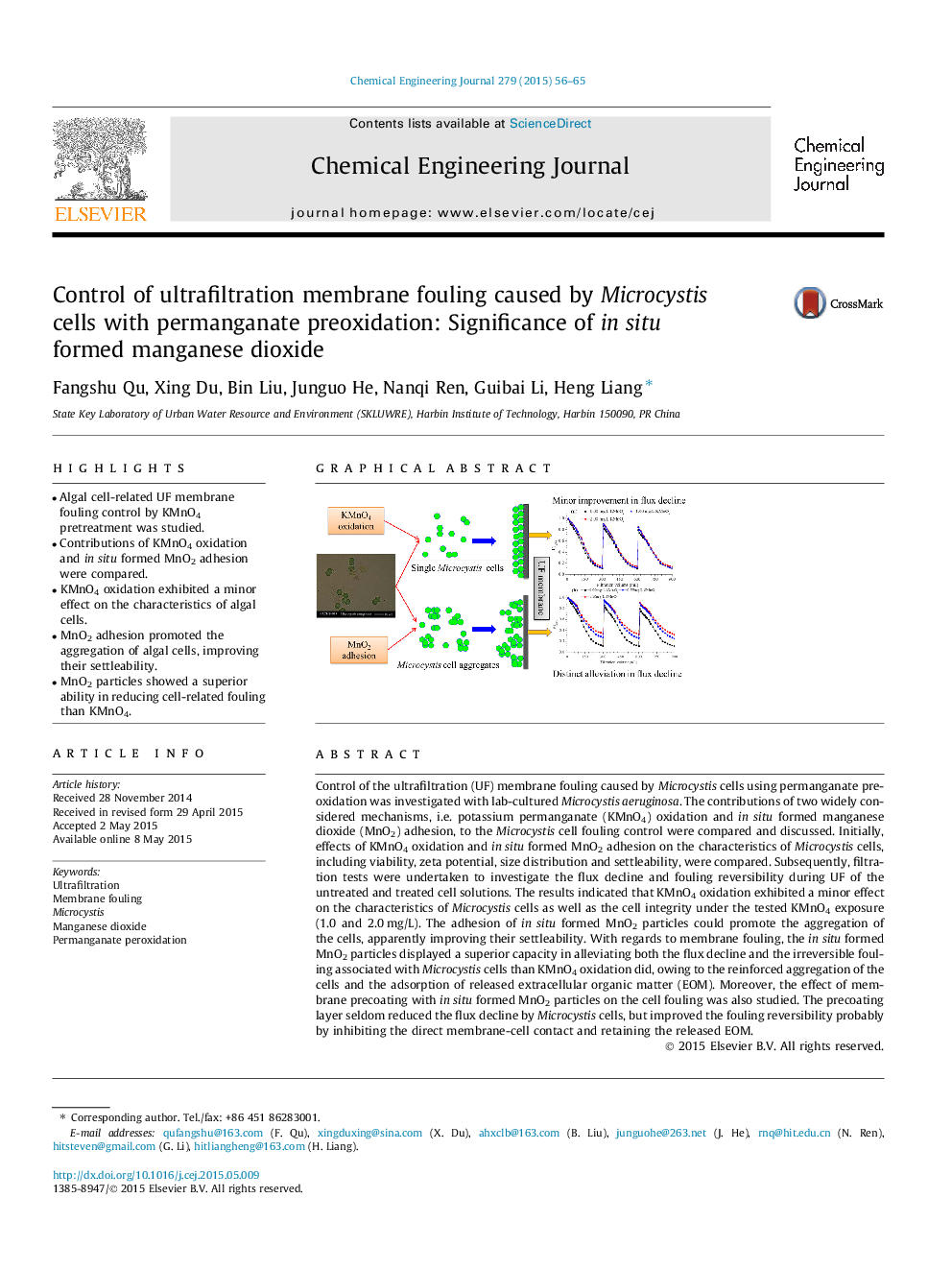| کد مقاله | کد نشریه | سال انتشار | مقاله انگلیسی | نسخه تمام متن |
|---|---|---|---|---|
| 146056 | 456362 | 2015 | 10 صفحه PDF | دانلود رایگان |
• Algal cell-related UF membrane fouling control by KMnO4 pretreatment was studied.
• Contributions of KMnO4 oxidation and in situ formed MnO2 adhesion were compared.
• KMnO4 oxidation exhibited a minor effect on the characteristics of algal cells.
• MnO2 adhesion promoted the aggregation of algal cells, improving their settleability.
• MnO2 particles showed a superior ability in reducing cell-related fouling than KMnO4.
Control of the ultrafiltration (UF) membrane fouling caused by Microcystis cells using permanganate preoxidation was investigated with lab-cultured Microcystis aeruginosa. The contributions of two widely considered mechanisms, i.e. potassium permanganate (KMnO4) oxidation and in situ formed manganese dioxide (MnO2) adhesion, to the Microcystis cell fouling control were compared and discussed. Initially, effects of KMnO4 oxidation and in situ formed MnO2 adhesion on the characteristics of Microcystis cells, including viability, zeta potential, size distribution and settleability, were compared. Subsequently, filtration tests were undertaken to investigate the flux decline and fouling reversibility during UF of the untreated and treated cell solutions. The results indicated that KMnO4 oxidation exhibited a minor effect on the characteristics of Microcystis cells as well as the cell integrity under the tested KMnO4 exposure (1.0 and 2.0 mg/L). The adhesion of in situ formed MnO2 particles could promote the aggregation of the cells, apparently improving their settleability. With regards to membrane fouling, the in situ formed MnO2 particles displayed a superior capacity in alleviating both the flux decline and the irreversible fouling associated with Microcystis cells than KMnO4 oxidation did, owing to the reinforced aggregation of the cells and the adsorption of released extracellular organic matter (EOM). Moreover, the effect of membrane precoating with in situ formed MnO2 particles on the cell fouling was also studied. The precoating layer seldom reduced the flux decline by Microcystis cells, but improved the fouling reversibility probably by inhibiting the direct membrane-cell contact and retaining the released EOM.
Figure optionsDownload as PowerPoint slide
Journal: Chemical Engineering Journal - Volume 279, 1 November 2015, Pages 56–65
